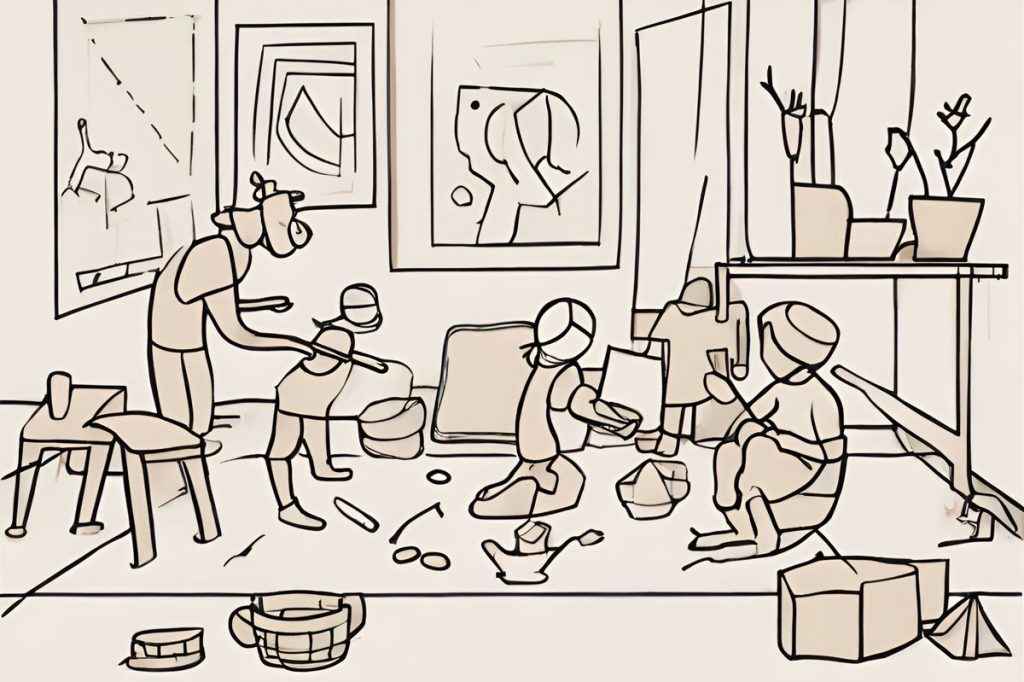The Cyprus Folk Art Museum in Nicosia showcases artifacts from before, during, and after the 1974 Turkish invasion, reflecting the human experiences and cultural losses of that era, including personal clothing, letters, domestic objects, and evocative photos. The exhibition offers a poignant journey through history, highlighting the heartache, resilience, and hope of the Cypriot people during and after the conflict, with a focus on individual stories and artistic expressions of those impacted by the invasion.
What does the Cyprus Folk Art Museum exhibition showcase?
The Cyprus Folk Art Museum exhibition in Nicosia showcases artifacts from before, during, and after the 1974 Turkish invasion, reflecting the human experiences and cultural losses of that era. Items include personal clothing, letters, domestic objects, and evocative photos, all telling stories of heartache, resilience, and hope.
Unveiling a Nation’s Heartache
Amid the solemn remembrance of Cyprus’ turbulent past, the Cyprus Folk Art Museum in Nicosia has opened its doors to an evocative exhibition. As the 50th anniversary of the 1974 Turkish invasion approaches, the museum has curated a collection that not only showcases the tangible heritage but also the intangible emotions of those tumultuous times. The items on display range from personal clothing to intimate letters, domestic objects, and evocative photos, each narrating a chapter of life on the island before, during, and after the conflict.
Dr Yiannis Eliades, one of the curators, emphasized that the exhibition seeks to reflect the human experiences of that era rather than delving into the political dimensions. Visitors can expect to embark on a poignant journey through history, as they encounter the relics of daily life that once belonged to the inhabitants of the displaced municipalities, including Kythrea, Lefkoniko, Karavas, and Akanthou. The echoes of bygone days resonate through items such as vases from Lapithos, traditional embroideries from Akanthou, and images from schoolbooks of Kythrea and Lefkoniko, all symbolizing the rich cultural tapestry that was torn apart by the invasion.
Artistic Recollections of Invasion
Transitioning into the heart of the conflict, the second room of the exhibition bears the most emotionally charged artifacts. Here, visitors are confronted with the raw, artistic expressions of those who were children during the invasion. Their drawings, vivid with memories, depict the harrowing scenes of planes, bombs, and a homeland overwhelmed by sorrow. Additionally, the gallery includes works by established Cypriot artists and harrowing photographs that capture the anguish of families torn apart, missing loved ones, and the brutal consequences of conflict.
A particularly touching exhibit is the dress worn by a young girl from Akanthou as she fled her home, displayed alongside a sculpture of a torn dress representing the sexual violence endured by women. Another stark sculpture features a shirt riddled with bullet holes, a silent testament to the men executed during the invasion. These pieces are not just artifacts; they are powerful statements that convey the trauma and resilience of a people uprooted and scarred by war.
Post-War Resilience in Everyday Life
The exhibition’s third room offers insight into the lives of refugees after the conflict. The displays here narrate stories of displacement and hope, with images of children who once lived in makeshift tents yearning for the return of family members. One can also find heartfelt letters exchanged via the Red Cross, where families attempted to reach their loved held captive or missing in the north.
A unique collection from a family in Eptakomi who remained in the north until 1976 captures how Cypriot homes once were. These artifacts, generously donated to the museum, range from garments to furnishings, each item a fragment of the island’s domestic history. Moreover, a poignant painting depicts a priest clutching an icon, symbolizing not only the personal but also the cultural losses suffered during the invasion. These looted relics, some now recovered, are a vital piece of the country’s heritage that Dr. Yiannis Eliades hopes will eventually be restored to their rightful place.
The museum extends an invitation to all who wish to engage with this significant chapter of Cyprus‘ past. The exhibition will remain open until January 2025, with guides available to offer explanations in both English and Greek. It is located on the second floor of the old archbishopric in old Nicosia, offering an opportunity for reflection and education that transcends generations.
What does the Cyprus Folk Art Museum exhibition showcase?
The Cyprus Folk Art Museum exhibition in Nicosia showcases artifacts from before, during, and after the 1974 Turkish invasion, reflecting the human experiences and cultural losses of that era. Items include personal clothing, letters, domestic objects, and evocative photos, all telling stories of heartache, resilience, and hope.
What is the focus of the exhibition at the Cyprus Folk Art Museum?
The exhibition at the Cyprus Folk Art Museum focuses on individual stories and artistic expressions of those impacted by the 1974 Turkish invasion of Cyprus. It highlights the heartache, resilience, and hope of the Cypriot people during and after the conflict, showcasing the human experiences and cultural losses of that era.
How is the emotional impact of the invasion represented in the exhibition?
The emotional impact of the 1974 Turkish invasion is represented in the exhibition through raw, artistic expressions, such as drawings by children depicting scenes of war, works by established Cypriot artists, and photographs capturing the anguish of families torn apart. The artifacts on display, including a torn dress symbolizing sexual violence and a shirt with bullet holes representing executions, convey the trauma and resilience of the people affected by the conflict.
How long will the exhibition at the Cyprus Folk Art Museum be open?
The exhibition at the Cyprus Folk Art Museum will remain open until January 2025. Visitors can explore the artifacts and artworks that offer a poignant journey through Cyprus’ history, reflecting on the heartache, resilience, and hope of the Cypriot people during and after the 1974 Turkish invasion. Guides are available to provide explanations in both English and Greek for a deeper understanding of the exhibits.

